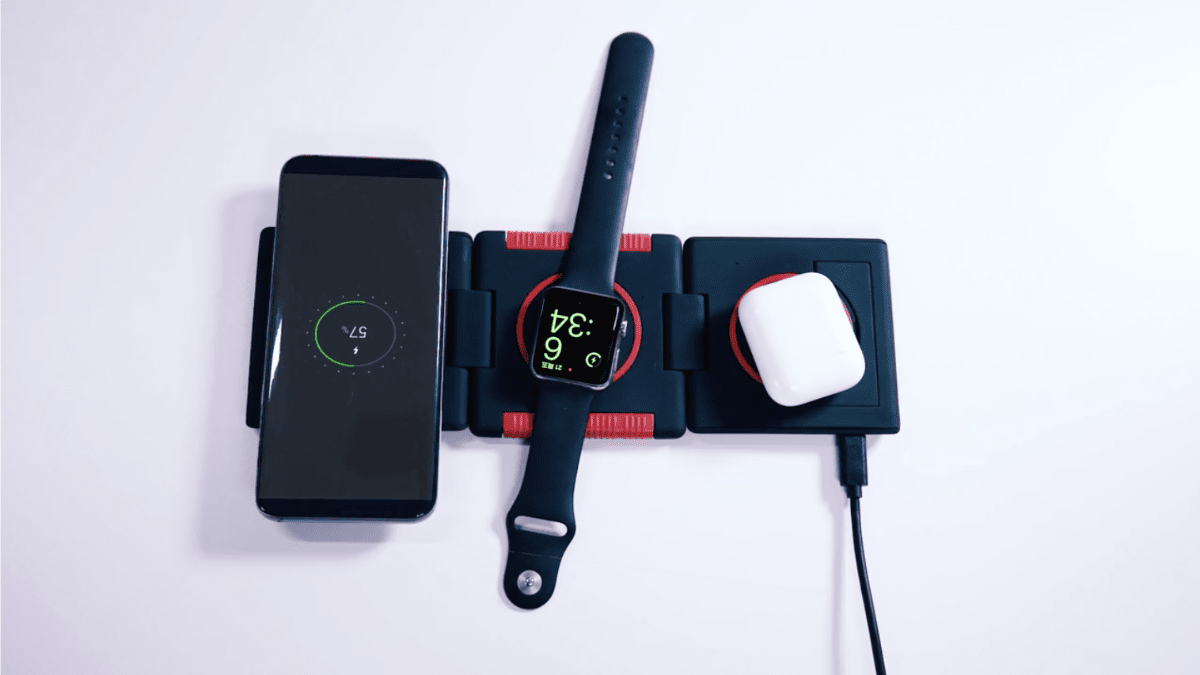DNA testing gaining trust in Nepal despite notable failures
As is happening with the country’s other vital organizations, Nepal Police have also been in a constant quest to modernize themselves. The organization passed a significant milestone in this journey when they imported a DNA testing machine in 2014. DNA testing has since been handy, often playing a decisive role in either establishing guilt or clearing suspects in multiple criminal cases.
Nepal Police had its first success with DNA testing in a 1996 rape case against Rakesh Kumar Singh, an assistant sub-inspector of police (ASI). On June 8 that year, one Himali Gole of Dolakha district had charged Singh with raping her. Singh denied the charge. But a DNA test showed that the semen found in Gole’s petticoat came from ASI Singh. That helped the district court establish Singh’s guilt and to sentence him. The decision was later upheld by the Appellate Court where Singh had appealed. Another test that was performed upon the appeal also went against the accused.
Singh then went to the Supreme Court, which too upheld the lower courts’ decisions. It, however, mentioned the victim’s testimony and other circumstantial evidence as its basis for the verdict, not the DNA test. Maybe the court didn’t consider the test a credible evidence back then. One of the reasons behind this skepticism could have been that without a testing center of their own Nepal Police had to send the samples to India’s Kolkata for DNA testing.
The Central Police Forensic Science Laboratory (CPFSL) of Nepal Police started DNA testing in Kathmandu in 2015. It performed 85 tests in 2015/16, 137 in 2016/17, and 136 in 2017/18. In 2019/20, the number surged to 310.
“Due to a rise in the number of criminal cases and easier availability of technology, we conduct more DNA tests these days,” says Senior Superintendent of Police Rakesh Singh (not the Rakesh singh mentioned above), head of the
forensic lab.
Don’t trust CSI
“There is increased awareness about DNA testing. But people are still unaware that this is not an easy method to establish crimes, nor is it always credible,” Singh adds. “Maybe they think it’s easy because of the influence of movies and TV shows.”
Yet the contribution of DNA testing in establishing tricky crimes is hard to dispute. Take the case of Chameli and Rabin Khadka, in-laws by relation. They had an affair from which a baby girl was born. DNA testing established Rabin as the biological father of the girl and a great family dispute was settled.
Success in such cases develops public trust on DNA testing. Perhaps that is why it is gaining in popularity.
According to criminologist Madav Prasad Acharya, people have started trusting this test more and more and rely on it to give them justice, “although the recent increase in the number of DNA tests may also suggest an increase in the number of crimes.”
The number of criminal cases at the police forensic lab is increasing too. In 1997/98, the lab had to handle 707 cases. The numbers rose to 6,864 in 1998/99 and 7,435 in 1999/2000. In 2018/19, the number soared to 10,101, the highest till date.
But even as there are many cases DNA testing has successfully resolved, there are also more
tricky ones.
Exceptions and rules
One notable failure has been the unresolved 2018 rape-and-murder case of Nirmala Panta, where the DNA test inaccuracy derailed the whole investigation.
In sexual assault cases, it is difficult to get pure samples and keep them from contamination. While collecting vaginal swabs, victims’ epithelial matter may be mixed with that of the rapist(s), which hampers with the result accuracy. In Panta’s case, the prime suspect Dilip Singh Basnet thus remains free even though he has informally confessed to the crime. The National Human Rights Commission pointed out to big lapses in sample collection.
The misconception that DNA testing always works worries Acharya. “As a scientific method, it is effective in establishing facts. But not always,” he says. “DNA testing is complex and highly sensitive. As such, even a simple error can lead to a disastrouslywrong outcome.”
One such case is from Britain’s Manchester in 2011. A man named Adam Scott was accused of rape, and his DNA matched a sperm sample taken from the rape victim. Due to sampling contamination, the DNA wrongly matched with that of Scott. He was later cleared on the basis of other evidences that went in his favor.
“For the DNA test to be just and effective, special care needs to be taken in sample collection, its transport, and protection from contamination,” says SSP Singh.
Moreover, Nepal Police’s forensic lab has only four staff and is desperately short of skilled manpower for DNA testing. The test is also rather expensive, with even cheap ones costing around Rs 20,000. But according to SSP Singh, Nepal Police is getting progressively better at DNA testing and in ensuring that the results are mostly accurate.
Best learning apps for kids
Funbrain Jr.

Funbrain Jr. has interactive games, worksheets, videos, interactive stories, and many more features to help your kid learn and explore. It engages them to the fullest. The app is free but there are in-app purchases, including an option to buy new and higher levels. Funbrain Jr. is available in both Android and iOS platforms.
Poptropica

Poptropica is free and easily available in both Android and iOS. Here, children can customize their own characters, complete quests, and play with friends. The app is most suitable for children aged 6-12.
Fish School

This app teaches children important concept likes letters, numbers, shapes, colors, and matching. The bright-colored fish in the app can form letters, shapes and numbers. With a simple touch and drag, your child can make the fish swim and do funny things. Winner of the Parents’ Choice Gold Award and the Children’s Technology Review Editor’s Choice Award, the app is suitable for children aged 2 and above. It is also available both in Android and iOS.
Gold prices in Nepal scaring both customers and traders
Srijana Rai of Dharan had to drop her plans to buy new gold ornaments for an upcoming wedding. She was hoping for the precious metal price to climb down. The price instead kept inching upward indefinitely. Gold prices have been continually rising for the past few months. On February 24, it hit an all-time high of Rs 80,300 per tola (11.664 grams). A day before, it was traded for Rs 78,800 per tola. On February 21, it was going for Rs 78,100 a tola.
“I am scared just to hear the gold price,” says Rai. An increment of Rs 2,200 in just three days was unexpected in the gold market.
Narendra Kumar Gupta of Riddhi Siddhi Jewelers says his business has been suffering for past six months. “Due to the unprecedented price rise, few people can purchase gold these days,” he says. “They now buy only if they are compelled to.”
Nepali women have traditionally considered gold a necessity during religious ceremonies like marriages and bratabandhas. “Only those who have such events in their family are buying,” Gupta laments.
When it was cheaper, people bought gold to add to their collection of golden ornaments or as a safe investment. Those incentives work no more, according to traders.
Gupta recalls that his average customer used to buy as much as five tolas of gold until last year. But a typical customer hardly buys even a tola now.
As per reports, gold prices have surged globally, most recently due to the coronavirus outbreak. According to a Reuters report, “Gold price soared as much as 2.8 percent on February 24 in international markets, the highest in seven years. Investors are worried about global economic growth in the face of sharply rising coronavirus cases outside China.” Reportedly, the virus has spread to at least 29 countries and territories.
Mohan Kumar Biswokarma, president of the Federation of Nepal Gold and Silver Dealers’ Association, confirms that gold prices have surged in Nepal due to global conditions. “Gold traders are struggling just to keep themselves afloat,” according to Biswokarma. “If the situation persists, it is hard to guess what will happen to our business.”
Kamala Sharma from Pokhara, who hasn’t been keeping tab of the price for the last few month, was surprised when she went to a gold shop at New Road. She wanted to make a golden ring for her son. When she first heard the price, she thought the shop owner was trying to cheat her, so she checked at the next shop. “It is unbelievable. I was shocked. Why is it so expensive? We ordinary people cannot buy it.”
According to traders, gold business has gone down by about 25 to 30 percent in recent months. But while the traders are struggling to sell gold, people who are hoarding gold are rushing to sell. But as there is little demand gold traders are reluctant buyers.
Om Senchuri, owner of New Dibya Gold and Silver Shop, also at New Road, reports many people are taking out gold from their lockers and coming to his shop to sell. He thinks the price will go down only after the coronavirus crisis is resolved.
On a Facebook post of Riddhi Siddhi Jewelers, one Sweekriti Kafle writes: “I am thinking of selling all the gold I have.” The shop puts price and related information on its Facebook page. On the same post, Sani Ghising Lopchan comments: “Poor people like us should stop dreaming about wearing gold from now on.”
Secrecy over the new guthi bill adds to old suspicion
On April 29 last year, Minister for Land Management, Cooperatives and Poverty Alleviation Padma Kumari Aryal tabled the Guthi Bill in the upper house of the federal parliament. The intent was to regulate Nepal’s guthis—the centuries-old local associations that take care of cultural sites and temples—by effectively nationalizing both the private and public guthis.The proposed legislation met with stern protests from the valley’s Newar community, who look after most of the guthis. The protests grew with public support from across the country, snowballing into the largest mass movement after the second Jana Andolan of 2006. Two months later, the government was forced to withdraw the bill.
Concerns are high again as the government is planning to table a new guthi bill.
“We are trying to table it at the earliest. If things go as planned, we will present the bill in the current parliament session,” says Janak Raj Joshi, spokesperson of the Ministry of Land Management, Cooperatives and Poverty Alleviation. He says the ministry has been in constant touch with concerned people and organizations over the bill.
Minraj Chaudhary, the chairman of Guthi Santhan, the government body responsible for overseeing all guthis, seconds Joshi. “The ministry is frequently consulting guthiyars [trustees] and other concerned people on the new guthi bill,” he asserts.
But the ‘concerned people’ are not pleased.
Ganpati Lal Shrestha, a guthi campaigner, says the government has kept the stakeholders in the dark about the contents of the new bill. “It is true that the ministry has organized meetings with us and other concerned bodies. But we haven’t been told what’s in the bill,” says Shrestha, convener of National Identity Protection Joint Struggle Committee, a group that spearheaded last year’s guthi movement.
“We have asked the government to make the draft public before tabling it in the parliament. Surely, it’s better for everyone to know now than to see protests later,” Shrestha adds.
The committee has also warned the ministry not to call perfunctory meetings.
Last year’s bill drew widespread flak as soon as it was tabled. Sections 23 and 24 of the bill were most problematic, as they allowed for a new commission to take away all the rights of guthis and their trustees. Protestors claimed the government was trying to erase the 1,500-year history of guthis by subverting the Guthi Sansthan. They thought the bill benefited only ‘land mafia’ at the cost of Nepal’s cultural heritage. The government, for its part, was unable to come up with a convincing answer on why the bill was tabled to start with. Guthiyar Gautam Shakya, who heads Kathmandu’s Kumari Ghar and Indra Jatra Management Committee, is unhappy with the government’s hush-hush attitude.
“A few days back, the ministry had summoned the concerned bodies to discuss the bill. But we are yet to see the draft,” says Shakya. “We believe the guthi properties should be handled by guthiyars. The government should limit itself to the role of a guardian.”
Ministry spokesperson Joshi says rumors that the government would take away the guthis’ rights and assets are baseless. “The government has never thought of interfering with their assets.”
Campaigners agree that the government can help the guthis govern themselves better—even without exercising total control over them. Social activist Anish Baidhya says many people are misusing Guthi assets, “threatening our culture and identity. So we need some regulation to ensure transparency”.
“We should also be able to establish new guthis,” adds Baidhya. “We recently had problems managing a new Ganesh Mandir. We wanted to do it through a guthi, but existing laws don’t allow that.”
He thinks that if their concerns are overlooked people will once more have no option but to protest.
Gifts for your loved ones
In the lead up to the Valentine’s Day, many of you may be looking for gifts for your loved ones. If you are, why don’t you consider these possible tech gifts?
Master & Dynamic MW07 True Wireless Earphones

If your loved one is fond of music, you can treat them with Master & Dynamic MW07 True Wireless Earphones (Rs 34,000). The earphones, available in seven different colors, come with customizable options, and feature handcrafted acetate, beryllium drivers, an advanced antenna with a 20-meter Bluetooth connectivity, silicone ‘fit wings’ and a stainless steel charging case that holds three additional charges for 14 hours of listening time.
Fitbit Versa

This amazing smartwatch (Rs 30,000) not only tells time but also tracks your fitness. It keeps track of your heartrate, counts your footsteps, and allows women to track their periods. Since the watch has so many useful features, it can be a perfect tech gift for this Valentine. The device is equipped with a 1.32 inch (3.35cm) LCD display.
Unravel Wireless Charger

This device costing around Rs 12,000 features a trio of wireless charging pads, each with a power of 10W, which means you can charge three different devices at the same time. Unravel Wireless supports mobile phones and devices like Samsung Galaxy, Apple iPhone, Google Pixel and many more. As the charger has a pop-out stand, it lets you place your phone in landscape position, allowing you to watch videos and charge at the same time.
Coronavirus stalks unprepared Nepali schools
While the world is on guard against the coronavirus that the World Health Organization has declared a global health emergency, Nepal still seems at a loss. The epidemic spreading out of China’s Wuhan city has already claimed over 400 lives and is rapidly spreading around the globe.As there is high number of visitors between Nepal and its northern neighbor China, the risk is evidently high in Nepal (even though the number of Chinese visitors to Nepal has come down drastically following China’s travel ban abroad.)
Save the Children quotes Hassan Saadi Noor, Asia Regional Director, as saying: “Children are particularly vulnerable because they like to touch and taste the world around them, don’t understand health advice and tend to have weaker immune systems than adults.”
He warns that the risk is heightened in the countries whose healthcare systems are not prepared to “adequately screen for the virus or treat patients who have contracted it.”
APEX tried to find out how prepared our schools—always at a great risk to contagious diseases—are in coping with the possible health crisis. Our findings were not encouraging.
The Ministry of Health and Population (MoHP) does not have any special program for schools. As children spend a great deal of time in schools and frequently come in physical contact with their friends, this is too sensitive a place to ignore.
“We have been working on different issues related to coronavirus, but haven’t thought of anything particular for schools,” said Mahendra Prasad Shrestha, spokesperson at the MoHP. Private and Boarding Schools’ Organizations of Nepal, a major umbrella of Nepali private school owners, also seems negligent.
PABSON co-president DK Dhungana says the organization has not thought much about it yet. “Till date we haven’t done anything to ensure the safety of school students against coronavirus. But we soon plan on conducting awareness programs,” Dhungana says.
Dhungana, who is also the principal of the Lalitpur-based Radiant Readers’ Academy, says his school has informed its students about the virus and asked them to wear masks. “But we haven’t made it mandatory. Focusing too much on it can terrorize students and their guardians,” adds Dhungana.
Such is also the situation at Pragati Shiksya Sadan, a government-owned school in Lalitpur.
“Right now, we haven’t done anything as we have been busy with our sports meet. But in few days, we are planning to invite medical experts to conduct awareness classes,” says Surya Prasad Timalsina, the school principal.
Dr Sameer M Dixit, public health research scientist at the Center for Molecular Dynamics Nepal, says school operators should pay special attention to students suffering from fever and cough, which could possibly be corona-related.
“Schools should strictly instruct those students to take rest and seek immediate treatment,” he says. “Similarly, special attention is required for those whose family members have recently returned from China.”
Dixit advices vigilance as “lately, the virus has also been found in people who showed no symptoms
A thriving business that is also socially aware
Many of you may not know, but Nepal has had a great native eyewear brand since 2014. Started by a group of friends in 2014, Anthropose is known for its unique product range, and the fact that all their frames are made from biodegradable cellulose acetate. They sell sunglasses as well as opticals that use CR39 lens that are polarized and scratch-resistant. But how much do they cost? The range is between Rs 4,200 and Rs 6,899. Suraj Shrestha, the CEO/Founder of Anthropose, was in the US for his higher studies. Unlike most of his other friends studying there, he always wanted to come back to Nepal, do something in his own country. “I was on a mission to prove that one can have a good career even in Nepal,” says Shrestha. That was when the idea for Anthropose came.
Anthropose not only sales eyewear but also works for a social cause. For every 10 pairs of glasses sold, it collects enough fund to sponsor a free cataract surgery or a remedial course in rural Nepal. Till date Anthropose has already done 415 cataract surgeries and held free remedial courses for 15 students.
While in the US, Shrestha used to work in a shoe manufacturing company known as ‘TOMS’ which provides free shoes to African people whose legs have been infected by walking on volcanic sand bare foot.
“The idea of TOMS intrigued me. That inspired me to start free cataract surgeries and remedial course,” Shrestha says.
Before that he went through many studies to find what he could do in Nepal. During research he came to know Nepal is a country that manufactures intraocular lens at a very affordable price. And yet many in rural areas can’t afford them and are losing their eyesight. This is why Anthropose is providing the service of free surgery and remedial course with the coordination of Tilganga Institute of Ophthalmology.
“You may not believe but since the inception of our business we haven’t had any complaints about our product quality. Just once did one customer complain about a small defect in our glasses,” says Shrestha. According to Shrestha, till date Anthropose has sold more than 4,000 eye-wears, most of them online.
Anthropose plans on expanding business in rural areas with cheaper glasses so that they are affordable to everyone
Three smartphones for 2020
To all mobile enthusiasts and anyone thinking of buying a new smartphone, here is some good news. This year, some amazing smartphones are to be launched. Here, we pick three of them.
Nokia 10

Nokia is also all set to launch its new Nokia 10 in 2020. The phone is expected to feature dual 48 megapixel (wide angle and telephoto) camera sensors on its rear, including 4-axis optical image stabilization. The device will come with 16 megapixel selfie camera with a capacity to record 1080p videos. The device will be equipped with 6.5 inch display. Other specifications include water resistant and quick charge. Again, the expected price is unknown.
One Plus 8Pro

Last October, One Plus launched its popular model One Plus 7T. This May, the company is expected to come up with its new model, 8Pro. The device will come with Qualcomm Snapdragon 865 processor, Adreno 650 GPU, and Quad rear cameras that can take good shots even in low light, punch-hole front camera with AI and portrait mode, 5G support, FHD+Super Amoled no-notch display, and many other features. The phone will also feature 6.5-6.6 inch super AMOLED display with a resolution of 1080x2340 pixels and aspect ratio of 190.5:9. The device with 8GB RAM and 128GB storage could be cost around Rs 85,000.
Xiaomi Mi 10

Xiaomi has announced launch of its new model MI 10 for global markets in February 2020. The company has also announced it will be the first phone to use Qualcomm Snapdragon 865 platform. Reportedly, two variants of this device are expected; a Pro model that features 108 megapixel main camera and a regular model with 64 megapixel camera. The price for the model has not been officially confirmed.













